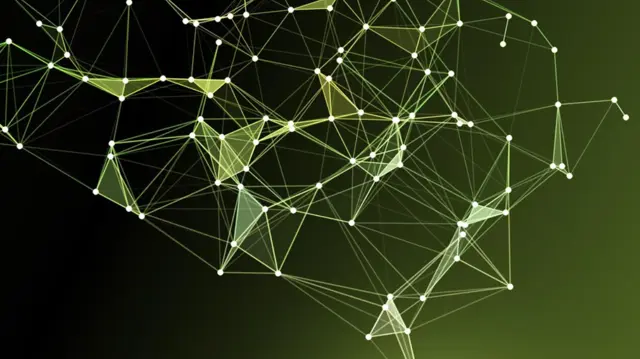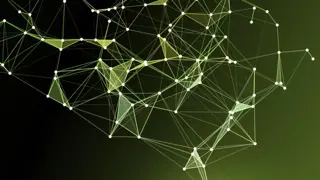
Deep Learning: Neural Networks, CNNs, RNNs, NLP, and Deployment
Self-paced videos, Lifetime access, Study material, Certification prep, Technical support, Course Completion Certificate
Uplatz
Summary
- Reed Courses Certificate of Completion - Free
- Uplatz Certificate of Completion - Free
Add to basket or enquire
Overview
Uplatz offers comprehensive training on Deep Learning: Neural Networks, CNNs, RNNs, NLP, and Deployment. This is online video-based training course. You will be awarded Course Completion Certificate at the end of the course.
What is Deep Learning?
Deep Learning is a subset of Machine Learning (ML) that focuses on neural networks with multiple layers to analyze complex patterns in data. It mimics the human brain’s way of learning and is the backbone of modern AI applications like image recognition, natural language processing, and autonomous systems.
How Deep Learning Works?
- Neural Networks: Deep Learning uses Artificial Neural Networks (ANNs), particularly deep networks with many layers (Deep Neural Networks - DNNs).
- Data Input: Raw data (e.g., images, text, audio) is fed into the network.
- Feature Extraction: The network automatically detects relevant patterns in the data without manual feature engineering.
- Weight Adjustment: Using optimization techniques (like Gradient Descent), the model adjusts weights to minimize prediction errors.
- Backpropagation: Errors are propagated back through the network, updating weights to improve accuracy.
- Training & Inference: The network is trained on labeled data and then makes predictions on unseen data.
Core Features of Deep Learning
- Multi-layered Networks: Uses multiple layers (hidden layers) to process data hierarchically.
- Feature Learning: Automatically extracts relevant features from raw data.
- Backpropagation: A technique to fine-tune weights in neural networks.
- High Computation Power: Utilizes GPUs and TPUs for complex computations.
- Non-Linearity & Activation Functions: Uses functions like ReLU, Sigmoid, and Softmax for decision-making.
- Scalability: Can handle large-scale datasets efficiently.
- Transfer Learning: Pre-trained models can be adapted for new tasks.
Real-World Applications of Deep Learning
- Computer Vision: Facial recognition, autonomous vehicles, medical imaging.
- Natural Language Processing (NLP): Chatbots, speech recognition, sentiment analysis.
- Healthcare: Disease detection, drug discovery, medical diagnosis.
- Finance: Fraud detection, algorithmic trading, risk assessment.
- Robotics: AI-powered robots, industrial automation.
- Entertainment & Media: Deepfake technology, content recommendation systems.
- E-commerce: Personalized recommendations, virtual assistants.
- Cybersecurity: Threat detection, anomaly detection.
- Gaming: AI-driven opponents, procedural content generation.
- Smart Assistants: Siri, Alexa, Google Assistant.
Benefits of Learning Deep Learning
- High Demand & Career Growth: AI/Deep Learning experts are in demand in tech, healthcare, finance, and robotics industries.
- Automation & Innovation: Helps in automating tasks and solving real-world challenges.
- Competitive Salary: Deep Learning specialists earn lucrative salaries in the AI field.
- Solving Complex Problems: Enables tackling problems that were previously unsolvable with traditional algorithms.
- Opportunities in Research & Development: Contributes to cutting-edge AI advancements.
Certificates
Reed Courses Certificate of Completion
Digital certificate - Included
Will be downloadable when all lectures have been completed.
Uplatz Certificate of Completion
Digital certificate - Included
Course Completion Certificate by Uplatz
Curriculum
Course media
Description
Deep Learning - Course Syllabus
Module 1: Introduction to Deep Learning and Neural Networks
• Introduction to Deep Learning Concepts
– Why Deep Learning?
– Key areas and future scope
• Basics of Neural Networks
– Neurons, layers, and weights
– Activation functions
• Understanding Neural Network Operations
– Forward Propagation
– Backward Propagation
• Activation Functions
– ReLU, Sigmoid, Tanh
– Impact on model learning
• Optimization Fundamentals
– Loss functions
– Gradient Descent
• Vanishing Gradient Problem
– Vanishing vs. Exploding Gradient
– Solutions overview
• Introduction to Deep Learning Frameworks
– Keras, TensorFlow basics
– Installation and setup
Module 2: Building and Training Neural Networks with Keras
• Creating a Keras Model
– Model setup and layers
– Sequential API basics
• Compiling and Fitting Models
– Specifying loss functions and optimizers
– Model fitting and epochs
• Building a Simple ANN in Keras
– ANN structure
– Training process
• Understanding Model Accuracy Metrics
– Accuracy vs. Precision
– Loss functions review
• Multi-layer Neural Networks
– Adding layers
– Model capacity basics
• Using Keras for Regression Models
– Model creation
– Regression use cases
• Using Keras for Classification Models
– Setting up classification models
– Evaluation metrics for classification
Module 3: Convolutional Neural Networks (CNN)
• Introduction to Convolutional Neural Networks
– Image processing basics
– CNN layers overview
• Building a CNN Model
– Convolutional layers
– Pooling and activation functions
• Training and Testing CNN Models
– Model fitting and validation
– Evaluating CNN performance
• Regularization in CNNs
– Dropout
– Preventing overfitting
• Transfer Learning Concepts
– Basics of transfer learning
– Popular pre-trained models
• Image Classification Project
– Preparing datasets
– Training and evaluating
• Fine-Tuning CNN Models
– Hyperparameter tuning
– Model validation techniques
Module 4: Recurrent Neural Networks (RNN)
• Introduction to RNNs
– Sequential data processing
– RNN structure
• Types of RNNs: LSTM and GRU
– When to use LSTM vs. GRU
– Applications
• Building a Basic RNN Model
– Simple RNN structure
– Hands-on coding
• Time Series Forecasting with RNN
– Preprocessing time series data
– Training and evaluating
• Using LSTM for Text Generation
– Text preprocessing
– Training with sequential data
• Sentiment Analysis Project
– Data collection and processing
– Model evaluation
• Fine-Tuning RNN Models
– Early stopping and validation
– Regularization techniques
Module 5: Advanced Deep Learning Concepts and NLP
• Deep Learning in Natural Language Processing
– Text processing basics
– Word embeddings
• Tokenization and Word Embeddings
– Tokenization methods
– Word2Vec and GloVe
• Building a Text Classification Model
– Sequential data preparation
– Training the model
• Transformer Networks in NLP
– Self-attention mechanism
– Use cases for Transformers
• Building a Transformer-based NLP Model
– Model setup and training
– Text classification example
• Evaluating NLP Models
– Accuracy and F1 Score
– Confusion matrix for text data
• Fine-Tuning NLP Models
– Transfer learning for NLP
– Regularization techniques
Module 6: Model Deployment and Use Cases
• Introduction to Model Deployment
– Deployment options
– Docker and cloud platforms overview
• Using TensorFlow for Deployment
– Setting up TensorFlow Serving
– Making predictions on a deployed model
• Exploring Deep Learning Libraries: PyTorch vs. TensorFlow
– TensorFlow features
– PyTorch basics
• Building Models in PyTorch
– Building neural networks
– Training in PyTorch
• Deploying on Cloud Platforms
– Setting up cloud environments
– Model deployment steps
• Real-world Deep Learning Use Cases
– Applications in healthcare, finance, and IoT
– Case studies
• Advanced Model Tuning Techniques
– Hyperparameter tuning
– Cross-validation
• Scaling Deep Learning Models
– Distributed training
– Data parallelism
• Final Deep Learning Project
– End-to-end project involving data preprocessing, training, and evaluation
– Project planning and execution
• Review and Next Steps
– Summary of key concepts
– Further resources
Who is this course for?
- Students studying computer science, data science, AI, machine learning, or deep learning
- Aspiring machine learning and deep learning engineers and AI developers
- Data scientists looking to specialize in deep learning techniques
- Software engineers and developers expanding into AI model development
- Researchers and academics working on neural networks and AI-based solutions
- IT professionals seeking to upskill in advanced AI and neural network frameworks
- Professionals in finance, healthcare, or IoT applying deep learning in real-world use cases
- AI enthusiasts and self-learners exploring modern AI applications and architectures
- Developers interested in building image, text, and time series models
- Engineers working with computer vision, natural language processing, or speech recognition
- Python programmers looking to learn TensorFlow, Keras, and PyTorch for deep learning
- Professionals preparing for AI/ML certifications or advanced study programs
- Product managers and tech leads overseeing deep learning projects
- Business analysts seeking to understand AI-powered insights and automation
- Professionals involved in model deployment and cloud-based AI solutions
- Freelancers and consultants building deep learning models for clients
- Career switchers transitioning into AI/ML or data science roles
- Educators and trainers creating content or teaching deep learning
- Startups and entrepreneurs developing AI-based products and prototypes
- Anyone interested in end-to-end AI project development, from model building to deployment
Requirements
Passion and determination to achieve your goals!
Career path
- Deep Learning Engineer
- AI Research Scientist
- Machine Learning Engineer
- Computer Vision Engineer
- Natural Language Processing (NLP) Engineer
- AI/ML Product Manager
- Data Scientist (DL/ML)
- Robotics Engineer (AI)
- Autonomous Systems Engineer
- AI Software Engineer
- Reinforcement Learning Engineer
- Generative AI Engineer
- AI Consultant
- AI Solutions Architect
- AI/ML Cloud Engineer
- AI/ML Infrastructure Engineer
Questions and answers
Currently there are no Q&As for this course. Be the first to ask a question.
Reviews
Currently there are no reviews for this course. Be the first to leave a review.
Legal information
This course is advertised on Reed.co.uk by the Course Provider, whose terms and conditions apply. Purchases are made directly from the Course Provider, and as such, content and materials are supplied by the Course Provider directly. Reed is acting as agent and not reseller in relation to this course. Reed's only responsibility is to facilitate your payment for the course. It is your responsibility to review and agree to the Course Provider's terms and conditions and satisfy yourself as to the suitability of the course you intend to purchase. Reed will not have any responsibility for the content of the course and/or associated materials.


